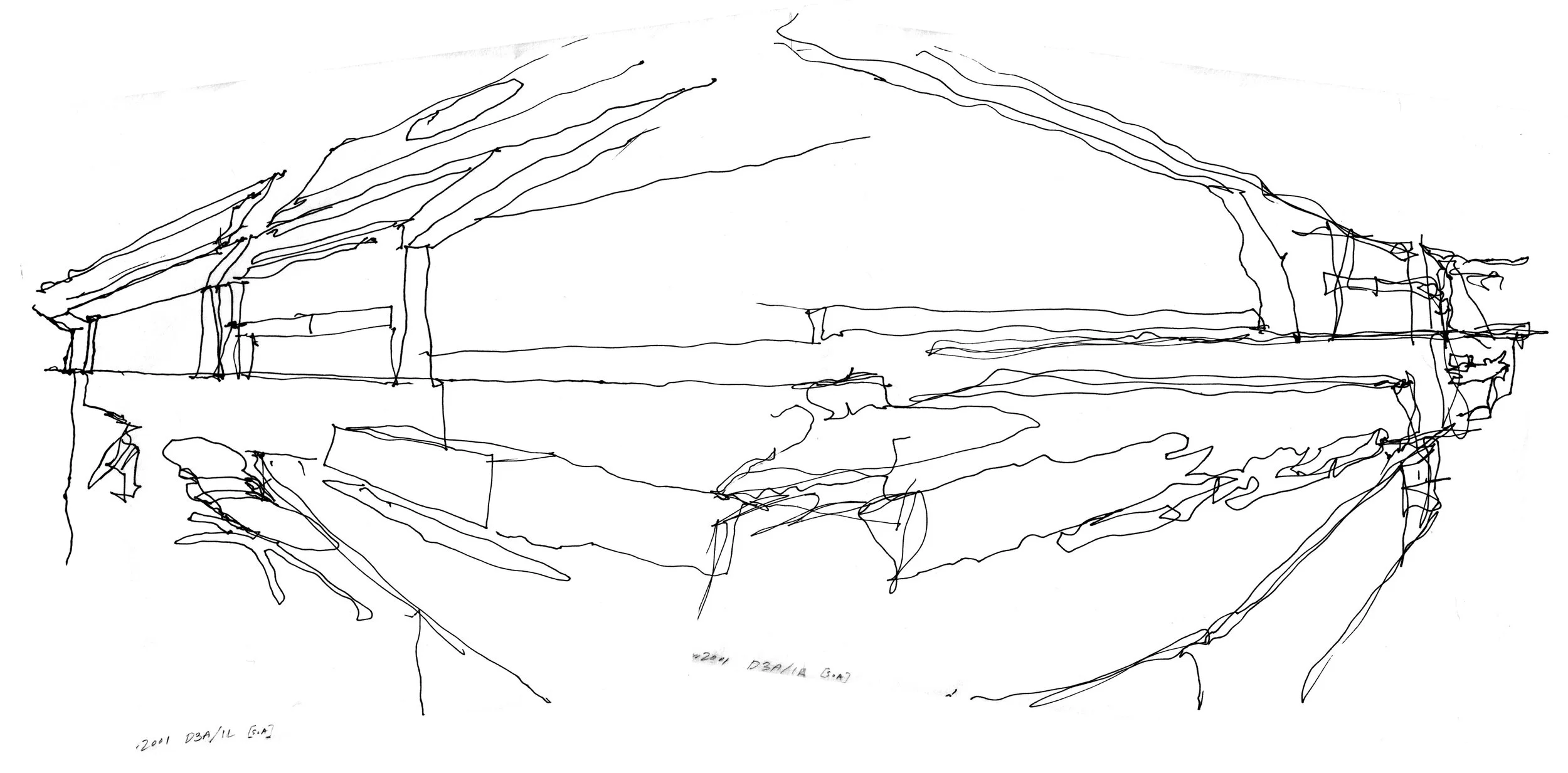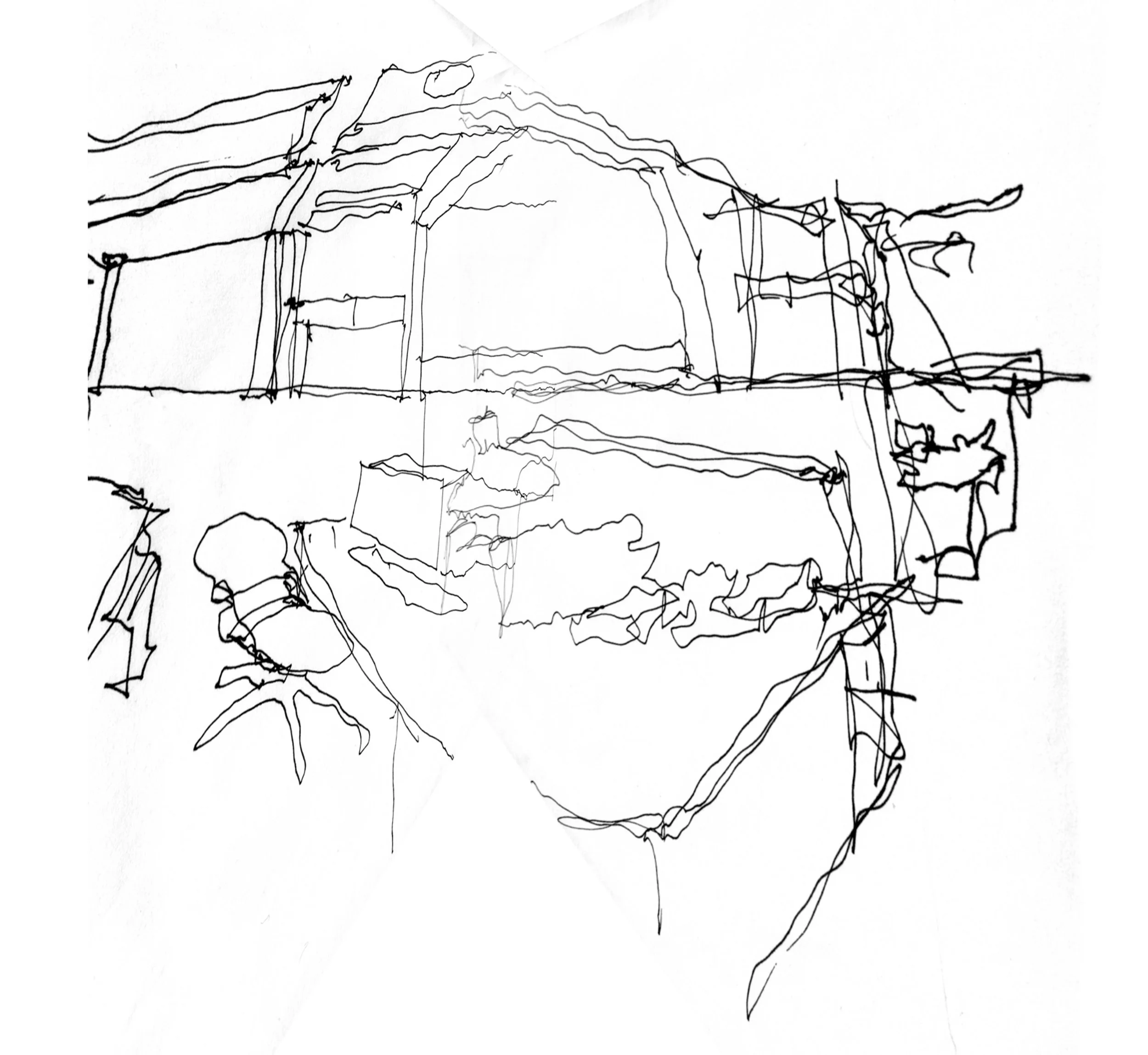Each of our eyes sees the world from a slightly different angle. If you split your vision with a thin drawing board and look ahead of you, your left eye sees the left half of the scene, and your right eye sees the right half. But your right eye also sees the blank board while your left eye sees the left half of the scene. Your brain’s interpretation makes you think the board is translucent, because one eye sees blank paper and the other sees clearly.
You can draw on the right side with what you see on the left, you can draw on the left side with what you see on the right. The board, placed perpendicularly to your nose creates an extremely oblique angle for drawing, creating a distorted image. This anamorphosis looks clear from the oblique angle, but from the side you see a drawing that reveals your cone of vision—the range of view that converges on your pupil.
By compressing the geometry digitally, the scene of a work station cubicle becomes more clear.



